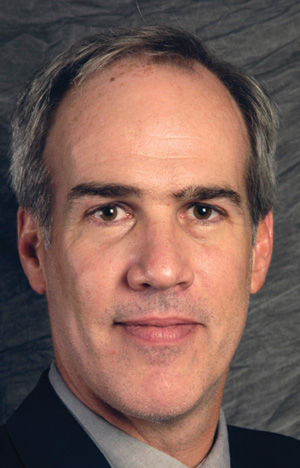Doctor diagnoses the harm of stress in education
Published October 19, 2016
The Association of American Medical Colleges honored Dr. Stuart Slavin in 2013 with its highest teaching award for his work restructuring St. Louis University’s four-year medical school curriculum to help students better cope with anxiety.
Now Slavin says the school’s model for stress management would benefit students of all ages.
“So many students go through life thinking one adverse event – a C grade or even a B-minus – equals failure for all time,” he said. “We need to recognize these predictable and dysfunctional emotional reactions and then teach students how to examine their own thinking, and to realize when that thinking is distorted and not serving them well.”
Slavin, 58, has researched student anxiety and depression and lectures around the world about the connection between student mental health and physician performance.
Slavin made time recently to talk about his work.
We’ve all seen little kids walking along with bulging backpacks, literally and figuratively loaded down with homework every night. You first became aware of specific stressors on medical students, but now you believe the whole educational system needs changing. Why?
Our educational system is insane and indefensible. More of everything does not lead to better outcomes. Overwhelming evidence shows that we are overloading our kids as early as middle school with homework, tutoring and extracurricular activities, and some are cracking under the pressure. Yet when you back off the pressure and reduce the curriculum, mental health and academic performance both improve.
What led you to study this?
I grew up in St. Louis, and when I returned from Los Angeles in 2004 to take this job, none of this was on my radar. Then I started reading reports on depression, anxiety and suicide among medical school students, and I was struck by the terrible outcomes.
What did you do next?
I looked at our students. They seemed pretty happy, though some were struggling. The results of the national questionnaire that all medical students take each year showed that our students were satisfied with their education and the administration here. But then we did something unheard of: We asked the students how they were doing.
What was the result?
It was devastating. We already knew that when they arrived for orientation, the students looked good. That meant the medical school experience was the cause of their anxiety. We decided to identify the sources of distress and sources of sustenance.
What had other schools done?
The absence of work in this area was striking. There were wellness initiatives, programs to encourage students to eat better, exercise and sleep more, but none of that seemed adequate.
Talk a bit about your model.
We help students deal more effectively with stress, we have reduced stress in the educational curriculum and the environment and we have created more opportunities for students to find meaning in their work. It’s working.
What about later: Is burnout a problem among doctors?
A study published last year reported that 54 percent of physicians nationally suffer from burnout. Three years ago, it was 46 percent, so it’s getting worse. There are real consequences. A stressed doctor cannot be as empathetic with patients and is more likely to make mistakes.
You were brought up Jewish, yet you have worked a long time at St. Louis University, a Jesuit school. Has that been a conflict?
My Jewish upbringing had a profound influence on who I am and what I do, so it may seem strange, but the philosophical overlaps between the two groups are significant. The university is a wonderful match for me.
Send your suggestions for HealthWatch to [email protected]. We focus on doctors, health care advocates, nurses, psychotherapists and counselors, researchers, fitness instructors, dietitians, physical therapists, and people meeting ambitious health and fitness goals.
















